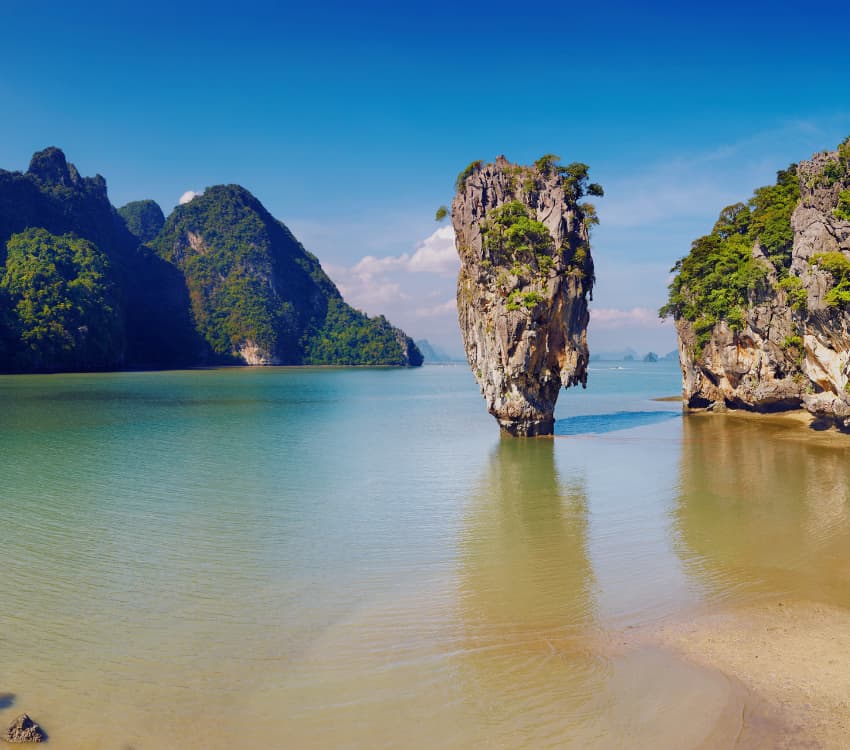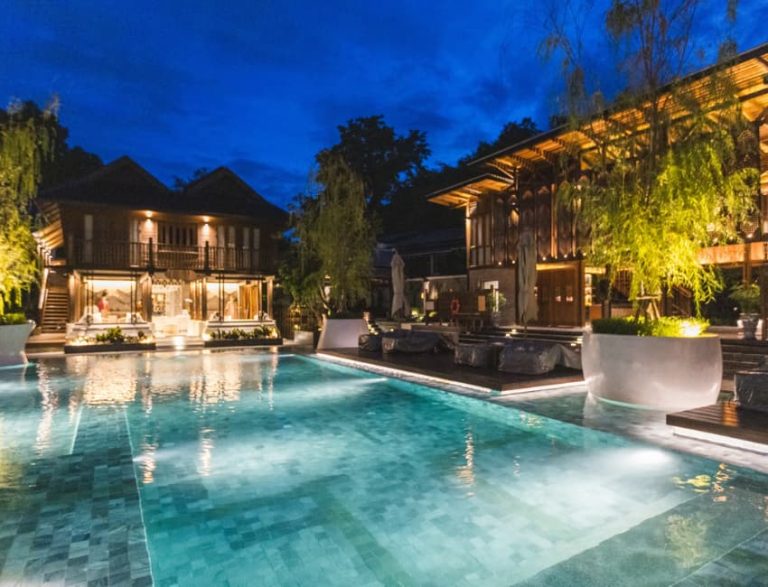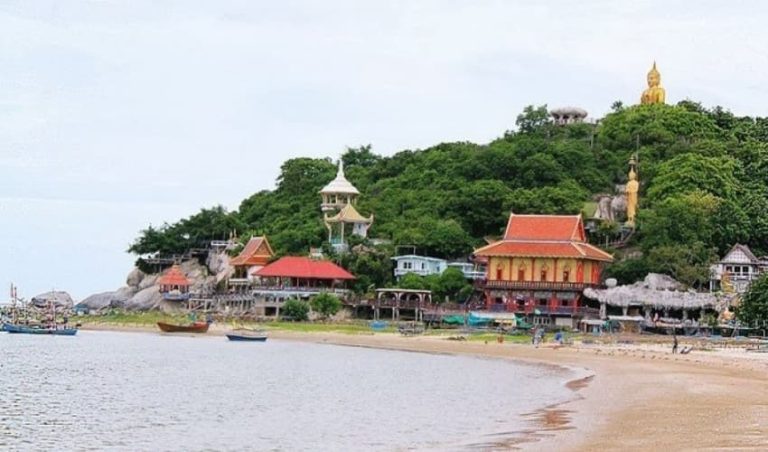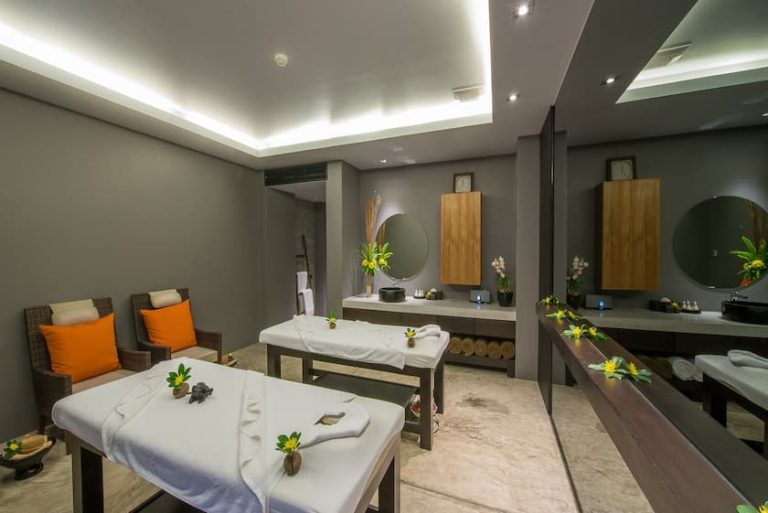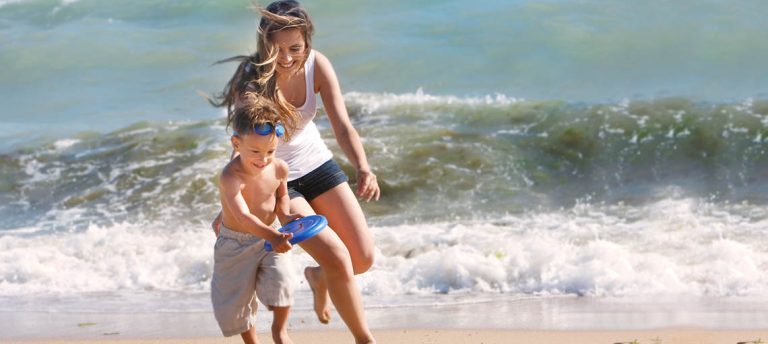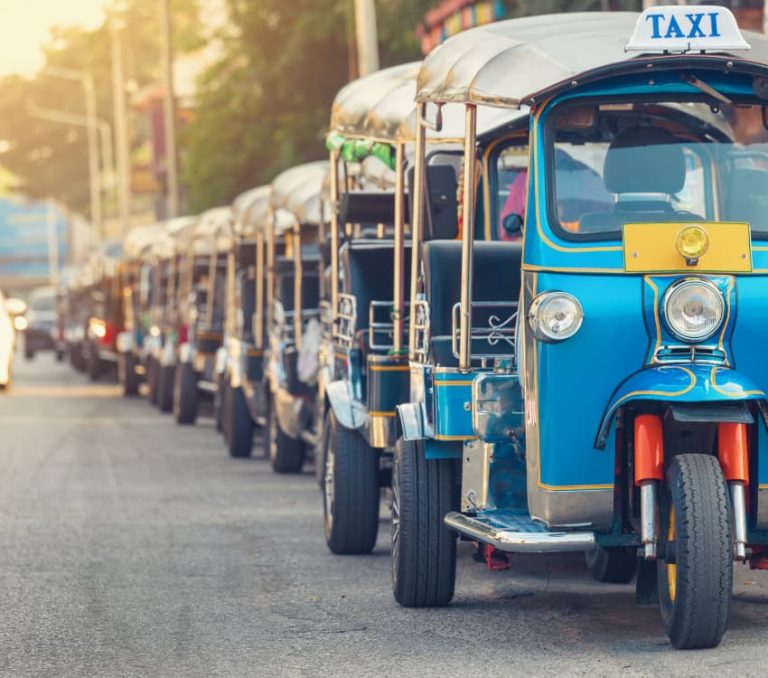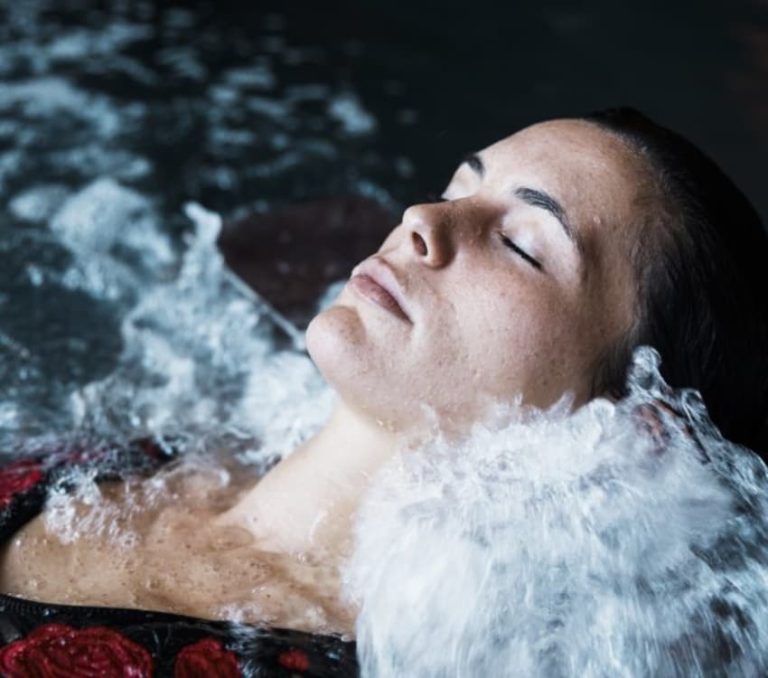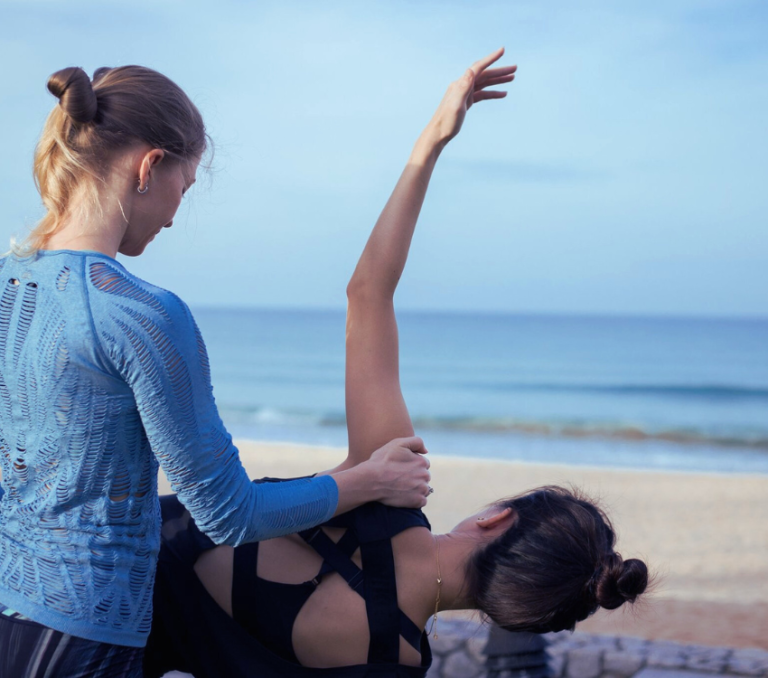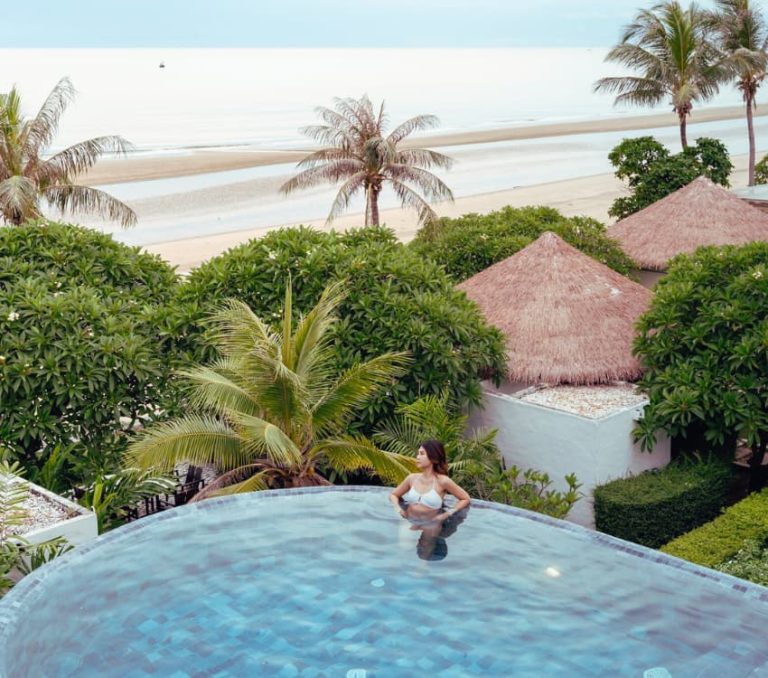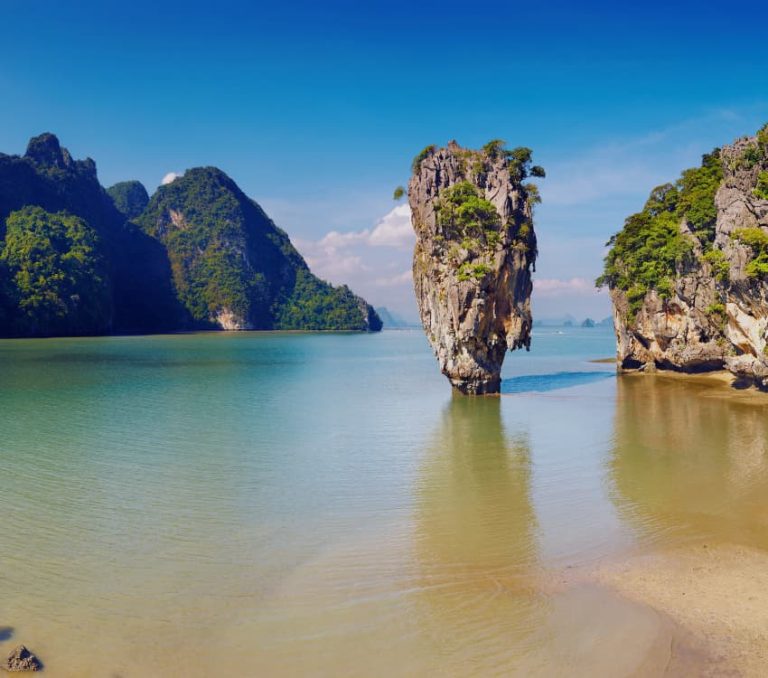Ao Phang Nga National Park is one of southern Thailand’s most iconic natural wonders, nestled along the Andaman Sea in the province of Phang Nga. Covering more than 400 square kilometres of striking limestone islands, emerald-green bays, and dense mangrove forests, the park is part of a region known for its raw beauty and ecological importance. Located just north of Phuket, Phang Nga offers a slower, more tranquil rhythm of life compared to its island neighbour — a place where nature still feels wonderfully untamed. Ao Phang Nga is at the heart of it all, a protected marine sanctuary that showcases the dramatic seascapes and biodiversity this part of Thailand is celebrated for.
Ao Phang Nga National Park
Established in 1981, Ao Phang Nga National Park protects the area’s unique landscape and diverse ecosystems. The park is dominated by spectacular limestone karsts that rise sharply from the sea— tall, jagged, and often cloaked in lush greenery. These towering formations, shaped over millions of years, are dotted with hidden caves, sheltered bays, and peaceful lagoons that create a dramatic and serene landscape.
But it’s not just about the scenery. The park also safeguards rich mangrove forests, which provide vital breeding grounds for marine life and help prevent coastal erosion. The sea, rock, and forest blend supports various plant and animal life, making it one of Thailand’s most significant marine environments.
Must-See in Ao Phang Nga National Park
Ao Phang Nga National Park has extraordinary sights, a distinct atmosphere, and appeal. These places genuinely define the park—iconic, culturally rich, and quietly awe-inspiring.
James Bond Island (Koh Tapu)
Perhaps the park’s most recognisable feature is James Bond Island, known locally as Koh Tapu. It gained international fame in the 1974 film The Man with the Golden Gun, and its needle-like limestone spire jutting from the sea has since become a symbol of Phang Nga. While it can attract crowds, the setting is undeniably impressive. Surrounded by calm, shallow waters and towering cliffs, the island’s distinct shape and dramatic setting are a striking introduction to the bay’s landscape.
Koh Panyee (Floating Village)
A short journey from the karsts brings you to Koh Panyee, a remarkable floating village built entirely on stilts above the water. Home to a Muslim fishing community that has lived here for generations, the town offers a fascinating look at traditional life on the bay. Wooden walkways connect homes, shops, and even a floating football pitch. Walking through its narrow paths, you’re greeted by warm smiles, the scent of freshly grilled seafood, and stalls selling locally made crafts. It’s a culturally rich and memorable stop, offering a glimpse into a way of life shaped entirely by the sea.
Koh Panak (Sea Caves)
Koh Panak is one of the best spots in the park for sea cave exploration. This island is riddled with hidden chambers and tidal caves, many of which can be accessed by small boat or kayak depending on the tide. Inside, the atmosphere changes completely — cool, echoing spaces where limestone formations hang from the ceilings and the sound of dripping water replaces the calls of birds outside. These caves are not only geologically fascinating but also feel deeply connected to the ancient, untouched nature of the region.
Koh Hong (The Hidden Lagoon
Among the park’s most serene spots is the secret lagoon at Koh Hong. Accessible only at low tide through a narrow opening in the rock, the lagoon reveals itself slowly — a calm, glassy pool enclosed by steep limestone cliffs. The name “hong” means “room” in Thai, and the effect is precisely that: a hidden natural chamber, completely enclosed and protected. The stillness here is extraordinary, and it’s easy to see why this place is often described as the park’s quiet soul.
Islands in Ao Phang Nga National Park
Ao Phang Nga National Park comprises over forty islands shaped by time, tide, and tropical weather. Some are dramatic limestone formations jutting from the sea like sculptures, while others are home to mangrove forests, quiet coves, and secluded lagoons. Exploring these islands is one of the most rewarding parts of any visit to the park, as each has its character, mood, and sense of discovery.
Koh Hong
Koh Hong is one of the park’s most striking and serene islands. It takes its name from the Thai word hong, meaning “room,” about the enclosed lagoon hidden within its limestone walls. Access is only possible at low tide, when a narrow channel reveals itself, allowing kayaks and small boats to slip inside. Once through, the world outside disappears — replaced by still water, sheer cliffs, and birds calling overhead. The atmosphere is hushed and peaceful, a natural amphitheatre cut off from the rest of the bay. It’s the kind of place that makes you instinctively whisper.
Koh Phanak
Another highlight is Koh Phanak, known for its intricate network of sea caves, caverns, and interior lagoons. The island is uninhabited and feels untouched by time, with gnarled trees growing from rock faces and long-tailed macaques occasionally seen along the shore. At the right tides, you can enter the caves by boat, floating through dark tunnels that open into brilliant, sunlit hollows within the island. Some inner chambers are filled with mangroves, others with brackish water, and many reveal fascinating rock formations. It’s an explorer’s paradise; every visit feels slightly different depending on the water level and light.
Koh Kudu Yai
Less visited but no less beautiful, Koh Kudu Yai is often described as a hidden gem. It lies northeast of Koh Yao Noi and offers a stunning, horseshoe-shaped bay with white sand and towering cliffs. The waters here are beautifully calm — ideal for swimming or anchoring a kayak — and the island feels wonderfully secluded. There are no facilities, shops, or buildings here; it is just pure, untouched nature. It’s the sort of place you can have all to yourself, especially if you arrive early or visit as part of a private boat trip.
Koh Roi
Koh Roi offers an entirely different experience for something a little more unusual. This small island is home to a shallow cave where thousands of fruit bats roost during the day. As dusk falls, you can watch them take flight in swirling numbers, heading out over the bay in search of food. The surrounding mangroves are rich in birdlife, and the island’s quiet coves make it a lovely spot for a peaceful paddle or picnic. There’s a slight sense of the wild here — a reminder that nature still runs the show.
Koh Yao Noi and Koh Yao Yai
Outside the park’s official boundary, the neighbouring islands of Koh Yao Noi and Koh Yao Yai are well worth exploring. These larger islands offer a deeper look into traditional Thai island life, far removed from the bustle of the more commercialised destinations nearby. On Koh Yao Noi, I found peaceful beaches, sleepy fishing villages, and small local markets selling fresh produce and handmade goods. Koh Yao Yai is more rural and quieter, with long empty stretches of sand and scenic cycling routes through rubber plantations and rice fields. While not technically part of the national park, these islands share the same landscape and rhythm — slow, natural, and incredibly calming.
Conservation in Ao Phang Nga National Park
Ao Phang Nga National Park is more than a stunning landscape — it’s a living, breathing ecosystem where conservation is encouraged and essential. With its mix of marine habitats, mangrove forests, limestone islands, and endemic wildlife, the park plays a crucial role in maintaining the biodiversity of Thailand’s Andaman coast. Fortunately, protecting that biodiversity has become a shared mission among park authorities, local communities, and sustainability-focused tour operators.
One of the park’s most important natural assets is its mangrove forests, which line the estuaries and fringes of the bay. These mangroves are not only visually striking, with their tangled root systems and teeming life, but they’re also ecological powerhouses. They act as natural storm buffers, protecting the shoreline from erosion and extreme weather. More importantly, they serve as nurseries for marine species — everything from juvenile reef fish to mudskippers, crabs, and prawns relies on mangroves during the early stages of life. Without these vital ecosystems, the entire food chain in the bay would be at risk.
There’s a growing awareness here that the park’s long-term survival depends on careful, responsible interaction. Many boat tours now operate under strict environmental guidelines — limiting engine use in shallow waters, avoiding litter of any kind, and keeping visitor numbers in sensitive areas to a minimum. Guides are trained in navigation and environmental education, sharing insights on the park’s geology, flora, and fauna while encouraging respectful behaviour from guests.
Kayaking excursions, in particular, are designed to leave as little impact as possible. Paddling quietly through mangrove tunnels or hidden lagoons allows visitors to observe the park’s natural rhythms without disturbing them. In many areas, motorised access is restricted altogether to help preserve the tranquility and enable wildlife to flourish undisturbed.
The level of involvement from local communities is equally heartening, especially in and around Koh Panyee and the mainland villages near Sam Chong. Many families have turned to sustainable tourism to earn a livelihood, offering homestays, traditional meals, or guided nature experiences rooted in cultural knowledge. These initiatives support conservation efforts and create a stronger connection between locals and the landscape they’ve called home for generations. It’s a model that benefits everyone — tourists, communities, and nature alike.
The park’s status as a protected area means that development is limited, and regulations are in place to prevent over-tourism, a challenge facing many other parts of Thailand. While some areas, like James Bond Island, experience higher footfall, measures are constantly being adjusted to reduce environmental pressure and disperse visitor traffic to lesser-known parts of the park.
Ultimately, what makes Ao Phang Nga so special isn’t just its beauty — it’s the collective commitment to keeping it that way. Whether through government enforcement, local stewardship, or mindful tourism, every effort is being made to ensure that future generations can explore its waters, wander its caves, and marvel at its mangroves as we can today.
Temples in and Around Ao Phang Nga National Park
While Ao Phang Nga National Park is best known for its dramatic seascapes and rich biodiversity, there is also a quieter, more contemplative side to the region — one deeply rooted in spirituality. In and around the park, you’ll find temples, shrines, and sacred spaces that reflect southern Thailand’s deep cultural and religious heritage. Many of these places are tucked into the cliffs or nestled beside the water, blending seamlessly into the natural world around them.
Wat Suwan Khuha – The Cave Temple (Wat Tham)
Just a short drive from the park’s mainland access points lies Wat Suwan Khuha, also known as Wat Tham or the Cave Temple. It’s one of the Phang Nga region’s most significant and atmospheric temples. Set inside a vast limestone cave, the temple houses a 15-metre reclining Buddha, surrounded by offerings, incense, and flickering candles. As you enter the cavern’s cool, dim interior, there’s an immediate sense of calm and reverence. The echoes of footsteps and gentle chants bounce softly off the stone, creating a natural stillness that feels miles away from the outside world.
Monks live and meditate in the nearby forest, and the site continues to serve as a working monastery, not just a tourist attraction. Outside the cave, monkeys gather in the trees, and visitors are welcome to sit quietly, feed them (mindfully), or observe. Wat Suwan Khuha is more than a photo opportunity—it is a place where everyday spirituality is lived, not staged.
Shrines Within the Park
Although no formal temples are within Ao Phang Nga National Park, you’ll find small spirit shrines in surprising places. Tucked into crevices in the rock, perched on headlands, or placed near the entrances of caves, these humble offerings are often decorated with garlands, incense sticks, or colourful ribbons. They’re typically left by local fishermen, guides, and villagers to honour the sea and land’s spirit and seek protection during their journeys.
During one of my kayaking trips, we passed a tiny shrine wedged into the base of a karst formation—a quiet, unspoken reminder that many who live nearby consider these natural spaces sacred. These shrines may not be large or elaborate, but they’re powerful symbols of the respect that local communities continue to hold for the land and waters of Phang Nga.
Wat Tham Ta Pan
For something completely different — and slightly surreal — Wat Tham Ta Pan, located near Phang Nga town, offers a more symbolic take on spirituality. This temple complex presents a vivid interpretation of Buddhist cosmology with depictions of heaven, hell, and the afterlife. Visitors walk through the mouth of a giant dragon to enter the temple grounds and can explore a cave filled with statues representing karmic consequences, spiritual trials, and celestial reward.
It’s intriguing and thought-provoking — a visual reminder of Buddhist teachings, conveyed through bold imagery and local myth. While it may initially feel theatrical, the temple carries a sincere message about moral conduct and spiritual reflection. It’s undoubtedly one of the more unusual temple visits in the region, but one that leaves a lasting impression.
Day Trip Idea for Ao Phang Nga National Park
Ao Phang Nga National Park offers incredible natural beauty, cultural heritage, and peaceful seascapes. With so much to see, planning a day trip can feel challenging, but a thoughtfully paced itinerary allows you to experience several highlights without feeling rushed. Below is a suggested route to help you make the most of a day in the park.
Morning
Early Departure and Tranquil Waters
Start your day early to enjoy the calm conditions and softer light. Boats typically depart from piers near Phang Nga town, Sam Chong, or Ao Por. The early morning hours are ideal for photographing the dramatic limestone cliffs and enjoying the stillness of the bay before other visitors arrive.
Mid-Morning
Sea Caves and Hidden Lagoons
Head first to Koh Panak, known for its sea caves and interior lagoons, called hongs. Depending on the tide, you can enter narrow caves by kayak or small boat, emerging into peaceful, enclosed lagoons surrounded by towering cliffs. These areas are quiet, shaded, and rich in birdlife — perfect for those interested in nature and geology.
Late Morning
James Bond Island (Koh Tapu)
Continue to James Bond Island, one of the park’s most photographed landmarks. Its distinctive limestone spire rising from the sea is instantly recognisable from the James Bond film The Man with the Golden Gun. Nearby, Koh Phing Kan features short walking trails, small caves, and scenic viewpoints worth exploring.
Lunch
Koh Panyee Floating Village
Stop at Koh Panyee, a traditional fishing village built on stilts over the water. Many restaurants here serve fresh seafood and classic Thai dishes with beautiful views across the bay. After lunch, walk through the village, where you’ll find local shops, a mosque, and a floating football pitch — all part of everyday life on the water.
Afternoon
Island Beach Stop and Swimming
Finish the day with a visit to a quieter island such as Koh Kudu Yai or a beach near Koh Hong. These less crowded spots offer clear, shallow water for swimming and snorkelling, or just space to relax before returning. Koh Hong’s hidden lagoon is a peaceful final stop if the tide is right.
Return
Mid to Late Afternoon
Begin your return journey in the late afternoon, ideally leaving enough time to reach the mainland before sunset. Most day trips last between six and eight hours, depending on how many stops you include and how much time you spend at each.
This itinerary is a starting point and can easily be adjusted based on interests, weather, and sea conditions. Whether you prefer more time exploring caves, visiting cultural sites, or simply relaxing by the water, Ao Phang Nga offers a variety of options for a memorable day on the bay.
Ao Phang Nga National Park with Aleenta
Located along the untouched sands of Natai Beach, Aleenta Phuket – Phang Nga Resort & Spa offers a peaceful sanctuary just moments from the dramatic beauty of Ao Phang Nga National Park. Here, the rhythms of nature set the tone — from the sound of waves rolling in at sunrise to the golden light that washes over the limestone cliffs beyond the horizon.
At Aleenta, we draw inspiration from our surroundings—not only in the design of our beachfront suites and villas but also in the way we approach hospitality. The same sense of calm and reverence you feel while drifting through Phang Nga Bay is reflected in the resort’s atmosphere. Open spaces, natural textures, and a seamless indoor-outdoor lifestyle allow guests to feel connected to the landscape at every moment of their stay.
Wellness and sustainability are at the heart of what we do. From our organic, farm-to-fork menus and bespoke spa therapies to our commitment to plastic-free living and local sourcing, we believe in mindful luxury that respects the environment we’re privileged to be part of.
For those drawn to the quiet magic of Ao Phang Nga, Aleenta offers more than just proximity — it provides a place to fully absorb and reflect on the experience. Whether you’ve spent the day exploring the mangroves and islands or watched the colours change across the bay from your private terrace, the resort is a space to reconnect with nature, balance, and yourself.
Related Articles
- Exploring Phang Nga Bay
- Ten Reasons to Visit Phang Nga
- Khao Sok National Park
- Khao Lak–Lam Ru National Park
- National Parks In Phang Nga Province
Aleenta Phuket
Phang Nga Resort & Spa
Phang Nga Resort & Spa
33 Moo 5, Khok Kloi,
Takua Thung, Phang Nga
82140 Thailand
T: +66 (0) 76 580 333

